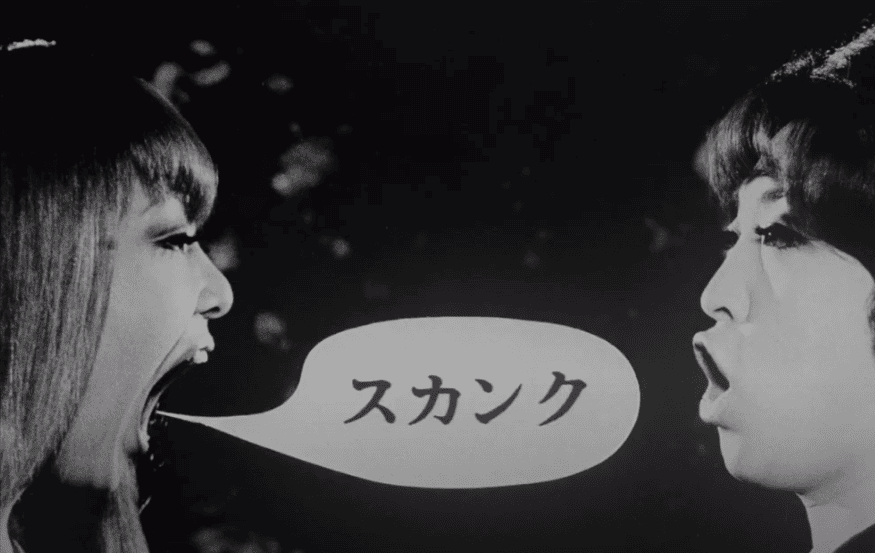“Funeral Parade of Roses” has to be one of the most successful avant-garde and experimental cinema masterpieces the world has ever seen. And no, I am not even exaggerating. This irreverent psychosexual reinterpretation of the myth of Oedipus Rex by director Toshio Matsumoto – dense with visual exploration, meta-cinematography, and rebellion – is one of the cornerstones of the Japanese New Wave of the 1960s. Through a temporally deconstructed narrative as chaotic as it is ingenious, Matsumoto encapsulates and crystallizes the generational drama of Japanese youth.
Set in Tokyo at the peak of its socio-political turmoil, the work follows the ups and downs of Eddie (Peter, Shinnosuke Ikehata), a young transgender woman grappling with her identity. The protagonist works at Genet, a gay bar in Tokyo managed by the gangster Gonda, whom she is in love with. Leda (Osamu Ogasawara) is the “Madame” and drag queen's leader, as well as being Gonda's (Yoshio Tsuchiya) partner.
Every sequence in “Funeral Parade of Roses” is iconic and unforgettable, but the scuffle between Eddie and Leda perfectly encapsulates the extraordinary essence of the film. Madame Leda discovers the illicit relationship between Eddie and Gonda, and this blow to her honor leads to a duel with the rival. To the pulsating rhythm of drum rolls – while the other workers peer over one another behind a black curtain to spy on them – the two women brandish pistols at each other. A vase of roses crashes to the ground as we witness Gonda, the object of their desire, suspended from a rope in the void.
The brief but intense scene reminiscent of Sergio Leone's spaghetti westerns concludes with a whimper because the guns are toys. Immediately after, we see Eddie and Leda in manga style: a still picture accompanied by speech bubbles emanating from their mouths is shown as they shout colorful insults at each other (“idiot”, “thief”, “impotent”, to mention some of the milder ones).
But it doesn't end here. In the next sequence, a real cat-fight blows up with wigs flying, scratches, and slaps. The peculiarity of the scene lies in the fact that the quarrel is filmed in fast-motion, accompanied by a ridiculous tune reminiscent of the circus or slapstick comedies.
This scene confirms the immense creative power of Matsumoto not only in depicting the various phases of a quarrel – the increasing tension, the insult, and the explosion of physical violence – but above all, the innovative nature and importance of “Funeral Parade of Roses” on all cinematic fronts.















